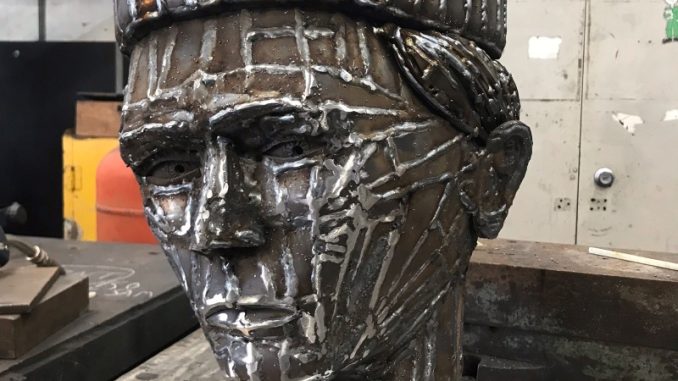
A proposal to erect a statue to mark a historic event likened to the Les Miserables in which a Victorian child bread thief was jailed has been warmly welcomed.
North Yorkshire councillors have approved celebrated steel fabricator sculptor Ray Lonsdale’s eight-foot Ballad of Sophia sculpture as the centrepiece of the new square at the Treadmills development in Northallerton town centre.
The £85,000 sculpture depicts Sophia Constable, the youngest female inmate incarcerated over the 230-year history of Northallerton’s prison, which was the first custom-built jail in England.
The statue is set to be unveiled in the coming months, 150 years after Sophia was sentenced to three weeks’ hard labour followed by four years in a reformatory for obtaining, by false pretences, a threepenny loaf of bread from a shop in Whitby, despite claiming her crime had been motivated by hunger.
The artwork is being financed with nearly £49,000 of taxpayers’ money, a £30,000 grant and £6,000 from the private sector.
The decision of Hambleton District Council to depict the girl who hailed from Whitby and only spent three weeks in Northallerton as the focal point in the county town was questioned ahead of councillors on a new local authority deciding whether to approve it.
However, members of the Richmond constituency planning committee appeared unanimous in their enthusiasm for the artwork, with former steel industry worker Councillor Heather Moorhouse likening it to tragic figures in Victor Hugo’s Les Miserables.
Northallerton councillor Caroline Dickinson said the statue would serve as a focal point looking from the High Street to the Treadmills development.
She said: “It will take people down Zetland Street where we have got some lovely small shops and onto the Treadmills site. I think it will be good for anybody coming to have a look around Northallerton.”
The meeting heard the historic building behind the statue had been the women’s wing of the jail, where the girl had been incarcerated.
Councillor Bridget Fortune, who worked at the jail before it was closed by the Ministry of Justice in 2013, described the proposal as “perfect”, adding: “It’s very appropriate there is going to be a living memory to this tragic little girl.”
Councillor Bryn Griffiths, another former steel industry worker, said while the concept of the statue was “fantastic”, reassurances were needed that the statue would last at least 25 years.
He said: “Were this to be a bronze or stone sculpture I’d say yes, I agree. Corten rusts and oxidises, becomes orange then brown with the weather. You can get dissimilar metal, corrosion, we all remember the old car bodies that used to fall apart. You need a reasonably good thickness 3mm at least of material.
“The last thing you want is something iconic like that… and within ten years you have got corrosion and sharp corners.”
The meeting was told some of the artist’s much larger sculptures had been created using a thinner plate steel and that the sculpture of the girl would have similarly thick heavy gauge steel to ones sited on the coast, such as Tommy at Seaham, near Sunderland.


Be the first to comment